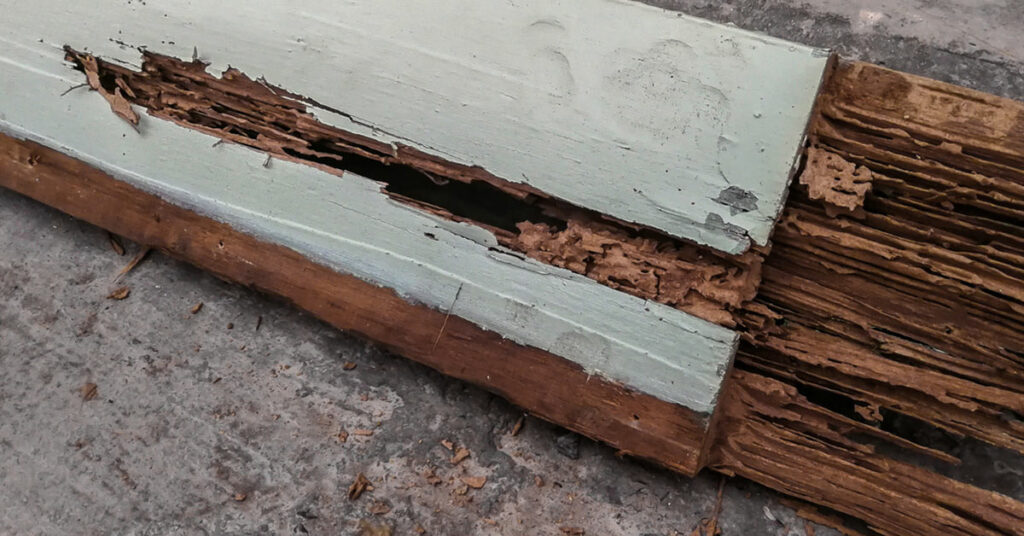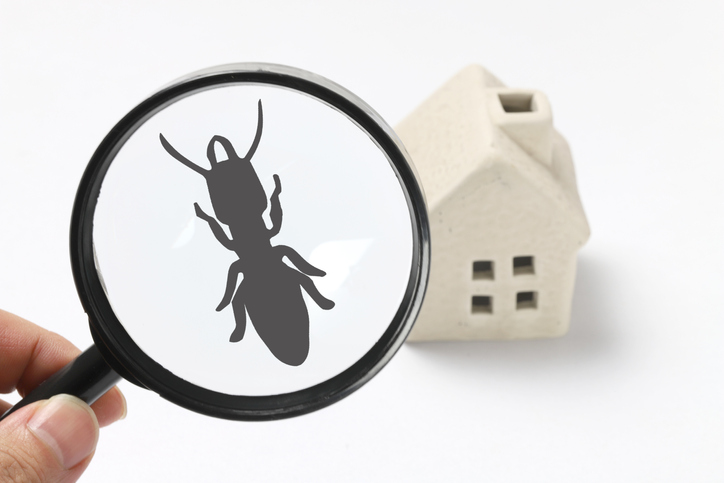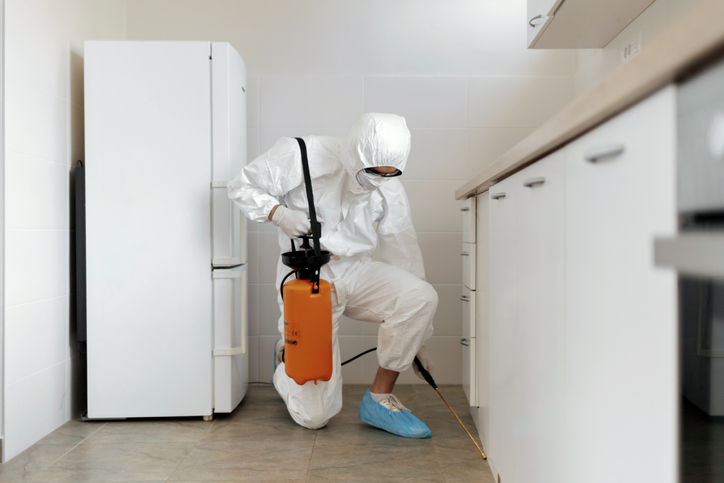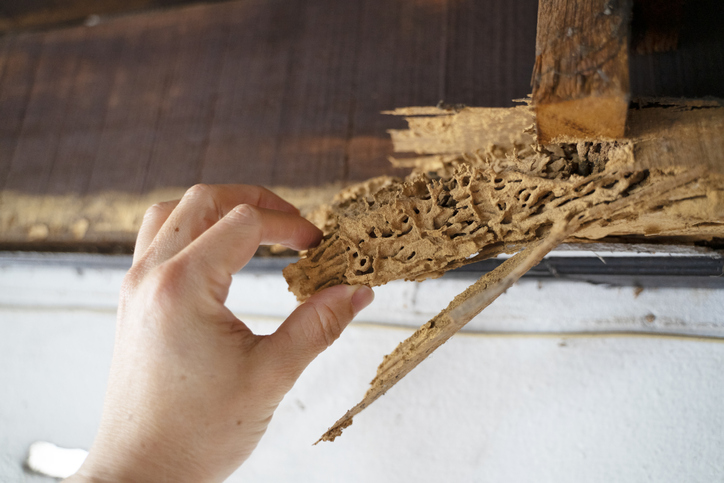Signs of termites and termite damage are crucial to identify in order to protect your property from the destructive effects of these silent invaders. By recognizing the common indicators, such as swarmers, mud tubes, hollowed wood, and maze-like patterns, homeowners can take proactive measures to detect, prevent, and address termite infestations before significant damage occurs. Understanding the signs of termites is the first step towards safeguarding your home and preserving its structural integrity.

Understanding Termites And Their Behavior
Termites are highly organized and live in large colonies. These colonies can range in size from a few hundred to several million individuals. The colony consists of a complex network of tunnels and chambers constructed by worker termites using a mixture of saliva, soil, and feces.
Table of Contents
- Understanding Termites And Their Behavior
- Common Signs Of Termite Infestation
- Recognizing Termite Swarmers And Mud Tubes
- Identifying Termite Damage In Specific Areas Of Your Home
- Preventing And Treating Termite Infestations
- Physical Characteristics Of Termites
- Different Types Of Termites And Their Characteristics
- Sounds Associated With Termite Activity
- Differentiating Termite Damage From Other Pests
- Conclusion
Termite colonies are typically hidden and often located underground, although some species can build their nests above ground. They require a moist environment to survive and thrive. This is why they construct mud tubes or tunnels to travel above ground and maintain a connection to moisture sources, such as soil or water leaks in buildings.
Termites are active year-round and continuously forage for food sources. They primarily feed on cellulose-rich materials like wood, but they can also damage other items such as paper, cardboard, insulation, and even electrical wiring.
Common Signs Of Termite Infestation
Termite damage can vary depending on the species and extent of the infestation. There are several signs of termite damage to look out for in your home. Termites feed on the cellulose present in wood, causing it to become weak and damaged. Check for wood that appears blistered, buckled, or has a sagging appearance, which could be a result of termite activity. Termites often create galleries or tunnels within the wood as they feed and travel. These tunnels appear as maze-like patterns and can be visible on the surface of damaged wood.
One common indicator is the presence of termite swarmers. These winged reproductive termites emerge in large numbers, especially during warmer months, to mate and establish new colonies. Spotting swarmers indoors, particularly near windows or light sources, is a strong indication of an active termite presence and the need for immediate action. After swarmers have mated and found a suitable location for a new colony, they shed their wings. Finding discarded wings near windowsills, doorways, or other light sources is a sign that a termite colony may be nearby.
Another sign to look for is the presence of mud tubes. Subterranean termites, which require moisture to survive, construct mud tubes or tunnels as they travel between their nest and food sources. These tubes are typically found along foundation walls, concrete slabs, or other surfaces. They appear as narrow, muddy structures that provide protection and maintain a connection to moisture sources. If you come across mud tubes, it is likely that there is an ongoing termite infestation.
Termite droppings, also known as frass, can also serve as a sign of an infestation. Drywood termites push their fecal pellets out of their galleries, resulting in the accumulation of small piles of wood-colored pellets near infested areas. Finding frass beneath or near wooden structures indicates that termites are actively feeding and causing damage.
Additionally, tapping on wooden structures such as beams, furniture, or flooring and hearing a hollow sound is a cause for concern. Termites feed on the cellulose in wood, hollowing it out from the inside and leaving only a thin outer layer intact. Therefore, the presence of hollow-sounding wood suggests termite damage and the need for further investigation.
Recognizing Termite Swarmers And Mud Tubes
Termite swarmers, also known as alates, play a crucial role in identifying active termite colonies. These winged reproductive termites emerge in large numbers, typically during the spring or early summer, as part of their natural reproductive cycle. Spotting swarmers is a clear indication that there is an established termite colony nearby. They are often attracted to light sources and may be seen swarming around windows, doors, or other illuminated areas. Identifying swarmers allows homeowners to take swift action to prevent the establishment of new colonies and minimize potential damage.
Signs Of Termite Swarmers
The presence of termite swarmers is an unmistakable sign of an active termite infestation. Swarmers are winged termites that are typically reproductive adults seeking to establish new colonies.
Swarmers emerge in large numbers and often swarm around light sources. They can be seen flying in swarms or crawling on surfaces. This behavior is their way of seeking mates and establishing new colonies. After mating, swarmers shed their wings. Finding discarded wings near windowsills, doorways, or other light sources indicates that a termite colony may be present nearby.
Formation And Purpose Of Mud Tubes
Mud tubes or tunnels are a distinctive feature created by subterranean termites. These tunnels serve as protective passageways that connect the termite colony to their food sources while providing moisture and shelter. The construction of mud tubes allows termites to travel safely above ground and maintain a connection with necessary moisture sources, such as the soil. They are typically made of soil particles, termite saliva, and feces. Mud tubes can be found along foundation walls, concrete slabs, or other surfaces in contact with the ground.
The formation of mud tubes begins when worker termites search for new food sources. They create these tubes by building thin, mud-like structures that serve as bridges between their underground nest and the food they seek. By recognizing and locating mud tubes, homeowners can pinpoint areas of termite activity and take appropriate action to prevent further damage.
Signs of Termite Tunnels or Mud Tubes
The presence of mud tubes is a clear indication of subterranean termite activity. Mud tubes are thin, pencil-sized structures that are often brown or muddy in appearance. They are typically found along foundation walls, in crawl spaces, or on other surfaces in contact with the ground. These tubes are used by termites to navigate safely between their nest and food sources. If you discover a mud tube, try breaking a small section of it. If the tube is active, termites will quickly repair the damaged area, indicating recent termite activity.
Identifying Termite Damage In Specific Areas Of Your Home
Identifying termite damage in various areas of your home is vital for early detection and effective treatment. From wooden structures to walls, flooring, outdoor elements, and other areas, understanding the signs of termite damage allows homeowners to take prompt action and protect their property from the destructive effects of termites.
Termite Damage In Wooden Structures
Wooden structures, including beams, furniture, and supports, are highly vulnerable to termite damage. When inspecting wooden structures for termite damage, there are specific indicators to consider. Termites consume wood from the inside out, resulting in hollowed wood. By tapping on the wood, if it produces a hollow or dull sound, it may be a sign of termite damage. Additionally, termite activity often creates maze-like patterns on the surface of the wood, which are the result of tunnels and galleries formed as termites feed and travel. Another characteristic of termite damage is weakened wood that appears brittle or crumbles easily upon touch. It is essential to carefully examine wooden structures for these signs as part of regular inspections to detect and address termite infestations promptly.
Termite Damage In Walls, Flooring, And Ceilings
Termite damage can extend beyond wooden structures and affect walls, flooring, and ceilings. When inspecting these areas for termite damage, certain signs should be taken into account. Bubbling or peeling paint or wallpaper may indicate termite activity behind the surface. Sagging or bulging areas could also be a result of weakened structural support caused by termite damage. In severe cases, visible tunnels or galleries may be observed on the surface of walls or ceilings, appearing as raised lines or irregular patterns. Regular inspections of these areas can help identify termite damage early on and facilitate appropriate treatment measures to mitigate further destruction.
Termite Damage In Outdoor Structures And Landscaping
Termites are not limited to infesting indoor areas; they can also cause damage to outdoor structures and landscaping elements. When assessing these spaces for termite damage, specific signs should be considered. Inspect wooden structures such as decks, fences, or sheds for indications of termite infestation, such as hollowed wood, maze-like patterns, or crumbling surfaces. Additionally, pay attention to tree stumps or dead trees in the yard, as termites are attracted to decaying wood. Signs of termite activity in these outdoor areas may include visible tunnels, hollowed-out wood, or the presence of termite swarmers. Regular monitoring of outdoor structures and landscaping can help identify and address termite infestations before they cause extensive damage.
Termite Damage In Other Areas
Termites can also cause damage in various other areas of your home. When examining these spaces, it is important to be attentive to potential signs of termite infestation. Inspect books, documents, and paper materials for chewed edges, small holes, or the presence of termite frass. Additionally, check insulation made from cellulose materials for signs of tunneling or frass. Stored items, especially those stored in cardboard boxes, should be examined for chewed cardboard, frass pellets, or the presence of termite swarmers. Lastly, although less common, termites can damage electrical wiring or plumbing pipes. Keep an eye out for signs of termite activity, such as frass, near these fixtures. A thorough inspection of these areas can help identify termite damage and prevent further destruction throughout your home. If termite activity is suspected, consulting a professional pest control service is recommended for proper assessment and effective treatment.
Preventing And Treating Termite Infestations
Preventing and treating termite infestations is crucial for safeguarding your home from the destructive impact of these pests. By implementing proactive prevention measures and utilizing effective treatment options, homeowners can significantly reduce the risk of termite damage and protect their properties.
Proactive Measures For Termite Prevention
To prevent termite infestations and protect your home, it is important to take proactive measures. These include removing wood-to-soil contact by using concrete footings or metal barriers, maintaining proper ventilation in crawl spaces and attics to reduce moisture levels, promptly addressing any plumbing leaks or moisture issues, and regularly inspecting and sealing entry points to prevent termite access. By implementing these preventive strategies, you can significantly reduce the risk of termite infestations.
Importance Of Professional Termite Inspections
Professional termite inspections play a crucial role in detecting termite infestations and assessing the extent of the damage. Trained professionals can identify subtle signs of termite activity that may go unnoticed by untrained individuals. Their comprehensive evaluations encompass hard-to-reach areas, ensuring that no termite activity or damage is overlooked. This early and accurate detection allows for prompt treatment, minimizing potential damage and providing peace of mind.
Treatment Options For Termite Infestations
When termite infestations are detected, homeowners have a range of treatment options to effectively eradicate these pests. One common treatment method is the use of liquid termiticides, such as products like Termidor. Liquid termiticides create a protective barrier in the soil surrounding the property or directly target specific infested areas, preventing termites from entering or eliminating those already present.
Another option is the use of baiting systems, such as the renowned Sentricon system. These systems employ slow-acting insecticides contained in bait stations strategically placed around the property. Termites consume the bait and spread it throughout the colony, eventually eliminating the entire termite population. Additionally, wood treatments are available, like Boracare, which involve applying specialized chemicals directly to infested or vulnerable wooden structures. These treatments penetrate the wood, providing long-lasting protection against termites.
Physical Characteristics Of Termites
Termites are small insects, typically ranging in size from 1/8 to 1 inch in length. While their size may vary, they share certain common features. One notable characteristic is their color, which can vary depending on the termite species. Workers and swarmers are usually pale or light-colored, while soldiers may have darker or more distinctive head capsules.
Termites have straight, bead-like antennae, which is another distinguishing feature. This sets them apart from ants, which have elbowed antennae. Additionally, termites have soft bodies without a distinct waistline, unlike ants, which have a clearly defined waist. These physical traits aid in distinguishing termites from other insects.
Different Types Of Termites And Their Characteristics
Different types of termites are classified based on their nesting habits and preferred habitats. The two most common types of termites encountered in homes and buildings are subterranean termites and dry wood termites.
Subterranean Termites
Subterranean termites are the most destructive type. They build their nests in the soil, requiring contact with moisture sources. They construct mud tubes to travel above ground, protecting them from predators and maintaining a connection to moisture. The workers of subterranean termites are pale, soft-bodied, and approximately 1/8 to 1/4 inch long.
Drywood Termites
Drywood termites establish their nests within dry, sound wood and do not require contact with the soil. They infest wooden structures, furniture, and other dry wood sources. Unlike subterranean termites, dry wood termites do not construct mud tubes and produce distinctive fecal pellets known as “frass.” Drywood termite soldiers have larger mandibles compared to subterranean termite soldiers.
Sounds Associated With Termite Activity
While termites are generally not noisy insects, there are specific sounds associated with their activity that can sometimes be detected. Soldier termites will bang their heads against the walls of tunnels or wood to warn the colony of potential threats. This rhythmic tapping sound can be heard if the infestation is severe. When termites are feeding or moving within the wood, there may be rustling or faint clicking sounds. These sounds are often very subtle and may require placing your ear close to the infested area to detect them.
Differentiating Termite Damage From Other Pests
It is essential to differentiate termite damage from damage caused by other pests to implement appropriate treatment and prevention measures. While both termites and other pests can cause damage to structures, there are key distinguishing factors to consider.
One crucial aspect is understanding the behavior and habits of the pests in question. Termites primarily feed on cellulose-based materials like wood and can cause extensive damage over time. Other pests, such as carpenter ants or wood-boring beetles, may also damage wood but typically do so to create nesting sites rather than for sustenance. Additionally, termites leave behind specific signs like mud tubes or frass, while other pests may exhibit different evidence of their presence.
Conclusion
Being able to identify the signs of termites and termite damage is essential for homeowners to protect their properties from these destructive pests. By recognizing indicators such as swarmers, mud tubes, hollowed wood, and maze-like patterns, individuals can take early action to prevent infestations and minimize potential damage. Additionally, seeking professional inspections and implementing appropriate treatment measures can effectively address termite infestations, ensuring the long-term integrity of homes and peace of mind for homeowners. Stay vigilant and proactive in detecting and addressing termites to maintain a termite-free environment.





